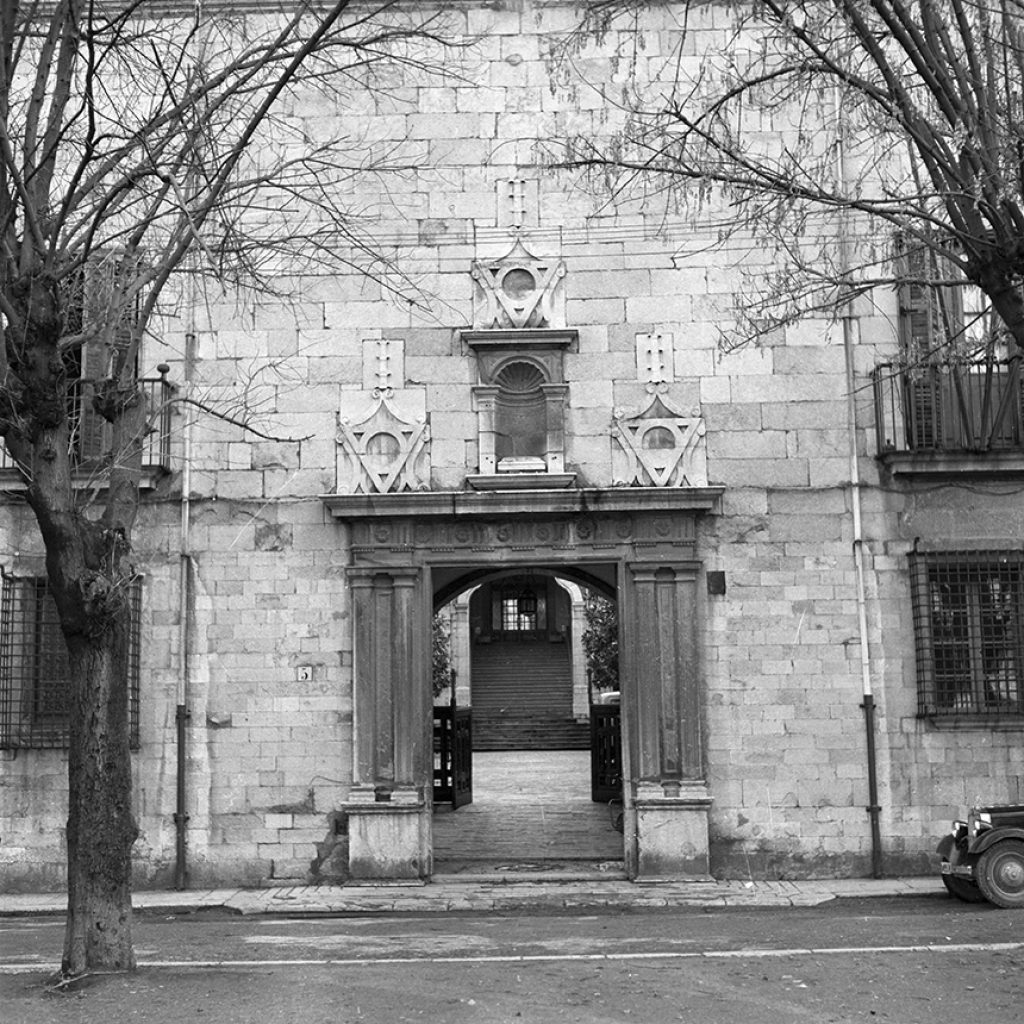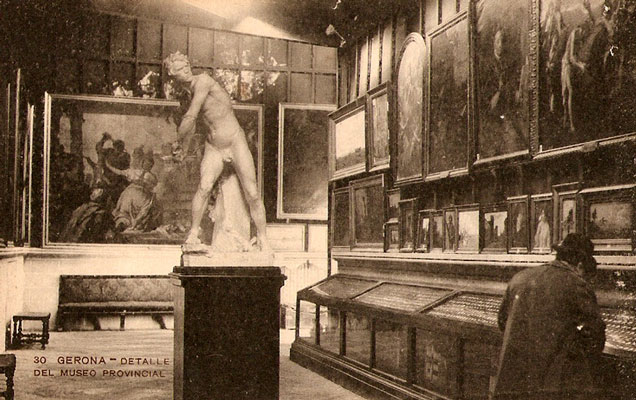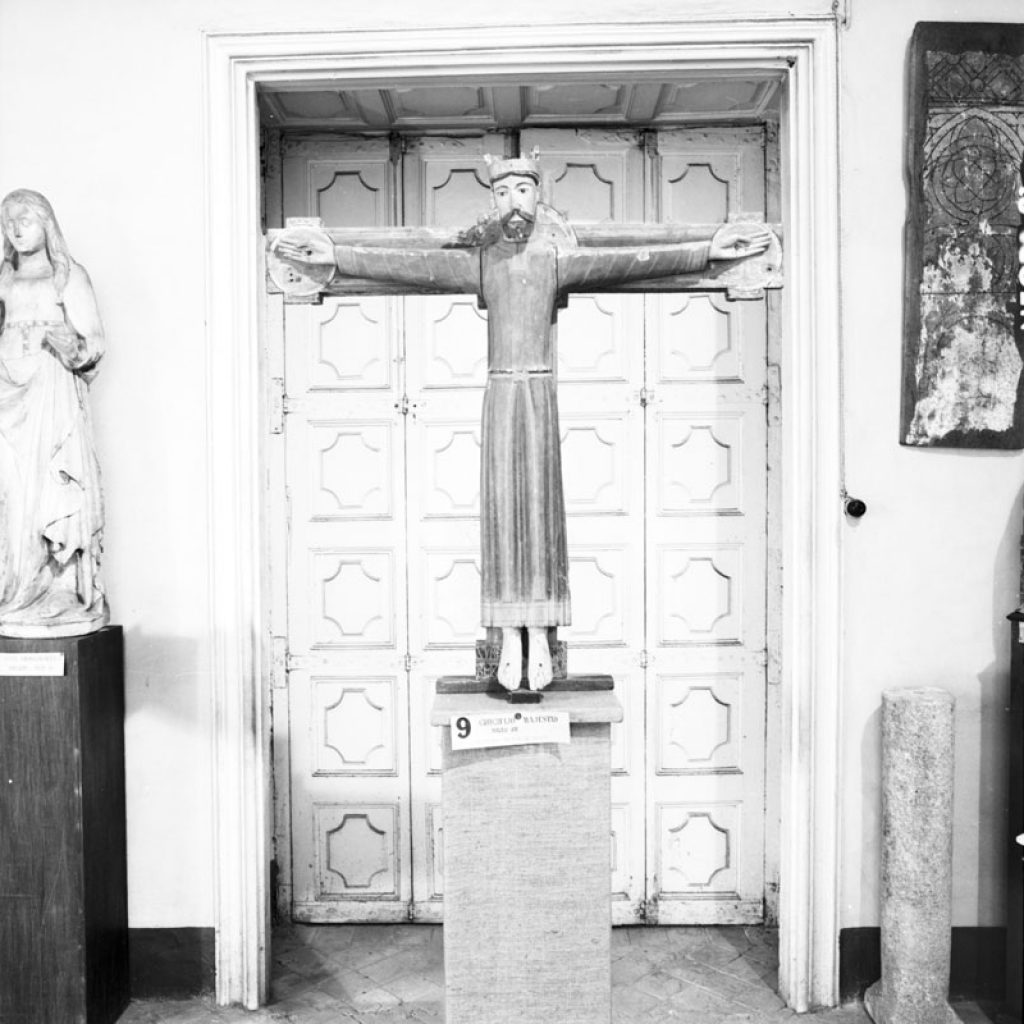Founded in 1976, the Girona Art Museum is home to two remarkable collections. It is based in the former Episcopal Palace, one of the most noble and spectacular buildings in Girona. The Art Museum also manages the heritage sites known as the former Saint Catherine’s Hospital, which houses one of the best-preserved hospital pharmacies in Europe.
The Girona Art Museum
The Girona Art Museum was founded in 1976 when the Girona Regional Council and the Diocese of Girona agreed to merge the collections from the Diocesan Museum of Girona and the Provincial Museum of Antiques and Fine Arts into one. The latter had been created in 1846 to save works of artistic and archeological interest –as well as architectural remains from secularized buildings following the sale of Church lands – and was opened in 1870 within the Sant Pere de Galligants Monastery, which currently houses the Archeological Museum of Catalonia in Girona.
The Diocesan Museum was created almost a century later, in 1942, under the guardianship of the Bishop, Josep Cartañà. The collection consisted mainly of art work and archeological pieces gathered by the canon, Ramon Font and by Father Pere Valls. Since 1929 they were mostly exhibited in the Throne Room of the Episcopal Palace.
In 1992, the Department of Culture of the Generalitat of Catalonia began managing the Art Museum. Until then, it had been managed by the Girona Regional Council. In 2009, the Department of Culture transferred space on carrer Ciutadans which will be home to Friends of the Art Museum, in the future.
In 2010, the MNAC [Museu Nacional d’Art de Catalunya] gives the painting El gran dia de Girona (A Great Day in Girona), on deposit, which is now installed permanently in the Josep Irla Auditorium, in the former Saint Catherine’s Hospital. Three years later, the ancient pharmacy at the former Hospital is reopened to the public, now managed by the Art Museum. As of 2014, the Museum forms part of the Agència Catalana del Patrimoni Cultural (Catalan Agency for Cultural Heritage).
Did you know…?
The Art Museum’s Collection – consisting of 13,753 catalogued works, originating from a wide variety of collections present since its founding, enriched by new additions in recent years– is one of the largest and richest in Catalonia.
_____________________________________________________________________________________


The Episcopal Palace
The Episcopal Palace is where the Art Museum is now based. It is one of the noblest and most spectacular buildings in Girona since it is where the diocese used to be housed and was the residence for the bishop and his curia. What follows is a brief review of its history, highlighting the most relevant dates.
The first documented reference to the palace is from 998, when the Bishop Gotmar bought a house adjacent to the palace from Count Borrell. There are no identifiable remains left of that house.
As of the episcopacy of William of Peratallada (1161-1168) a new palace is built. After that, throughout the 14thand 15thcenturies, when the complex becomes an authentic castle or fortified palace, several emblematic spaces are built. Today, they are used as offices and permanent exhibition galleries in the Museum. The features most worth mentioning from that period are the galleries with semi-circular arches, the mullioned windows, the two towers and the Throne Room.
In the 16thcentury, several Renaissance-style enlargements were made. Several distinguished bishops initiated changes to build on top of pre-existing buildings and open up numerous large windows. You can see the heraldry of the promoters of those changes on those new windows. The building begins to look more and more like a palace while its interior takes on an increasingly residential character.
In the 17th century, efforts are concentrated in building the section that faces plaça Lledoners. During the Napoleonic sieges (1808-1809), the Palace is severely damaged. After the conflict is over, it is restored and enlarged until it reaches its current dimensions.
At the outbreak of the Spanish Civil War (1936), the bishop leaves the building. There was discussion about turning the palace into a People’s Museum, but following the rebels’ victory (1939), it goes back to its original function as the Episcopal Palace.
In 1973, the palace is no longer the bishop’s habitual residence. He gives it up to move into a private rental dwelling. Between 1979 and 1991, the first stage of remodeling and refurbishment is undertaken, and the Girona Art Museum is established in the palace under its current name.
Did you know that…?
The Ecclesiastical Tribunal had its seat in the building. The priests who were condemned for their sins and a variety of crimes were locked up in the prison, which still exists. The prison here was a cozy spot compared to most jails at that time. It wasn’t a practically subterranean dark, damp dungeon, but rather a set of rooms located on the fourth floor of the main tower. It provided the convicts with great views of the city. There are also some remains from a fireplace that the prisoners used to keep warm.
There are still traces of what the convicted priests wrote on the walls while they served time in prison. One such undated inscription read: «no por el quoniamestuvi aquí / aunquemujefue causa tal / sí solo por accidente fatal / sí porqué 91 díasvivíahí» (I was imprisoned for 91 days for having sexual relations with a woman).
From medieval times, kings used to stay at the palace during their visits to the city. During the 14thcentury, [King Pere IV of Aragon, called] Peter the Ceremonious stayed there on several occasions. He had a wooden bridge built to connect his room directly to the orchard. There are records describing King Ferdinand the Catholic’s trips there during the 15thcentury. Charles V’s shield was placed in the Throne Room in the 16thcentury in memory of his stay there.
_____________________________________________________________________________________

Former Saint Catherine’s Hospital
We need to go back to the beginning of the 13thcentury in order to find the origins of the building, now preserved since the 17thcentury. That is when, thanks to a popular initiative, the most important hospital for the poor was founded, near the one that is now preserved, but further away from the center of Girona. Saint Catherine’s chapel was built as an attachment to the hospital. Since ancient times, it has been associated with what used to be known as «The New Hospital» until it took on its new name. Many donations enabled the hospital complex to be enlarged and embellished throughout the 14thand 15thcenturies. In 1571, Philip II designated it a royal hospital.
In 1654, the original building was demolished and the hospital was moved into a larger building. The first stone of the new building was laid in 1666, which eventually turned into the current one. The new complex contained larger and more varied spaces, including a brand new pharmacy. In 1765, the Casa de la Misericòrdia (House of Mercy) was built and in 1785, the Convalescence Home was annexed.
The pharmacy is considered one of the most outstanding complexes of this type of establishment from the 17thand 18thcenturies, along with the pharmacy in Llívia. While the one in Llívia provided services to the entire population, Saint Catherine’s was exclusively a hospital pharmacy. Located on the ground floor of the building, access is directly through the interior courtyard. The groined vault ceiling of the rectangular room is decorated with allegorical paintings from the 19thcentury. These in turn cover earlier mural paintings from the Baroque period.
Among the furniture that has been preserved, the piece that stands out the most is a profusely decorated cordialer (a type of closet) that is embedded into a set of shelves where the most precious medication was stored. The pharmacy holds a collection of over 300 white vitrified ceramic jars (most dated from the 17thand 18thcenturies), in addition to several mortars, blown glass flasks and wooden recipients. In addition, the library contains several treatises on medical topics from medieval times up through the 20thcentury.








